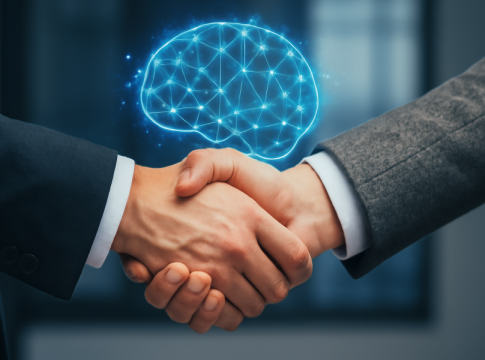Navigating the AI Landscape: The Imperative of Trust and Safety
Artificial intelligence (AI) continues to evolve at an astonishing rate, weaving itself into the fabric of both our personal and professional lives. As its sophistication grows, so does the urgency to establish robust frameworks that are designed not just to regulate but to enhance human well-being and trust. This pivotal moment in AI development necessitates a heightened sense of responsibility among tech leaders to ensure their creations operate safely and ethically.
Trust: The Cornerstone of AI
Recent advancements in AI—particularly in areas like language processing and multimodal reasoning—have led to unprecedented capabilities. However, every leap forward comes with elevated stakes. For instance, AI’s role in judicial proceedings has raised eyebrows, as instances of AI generating fabricated legal arguments have led to serious repercussions for legal professionals. Such incidents underscore an alarming truth: unchecked AI can inflict real-world damage, affecting lives in profound ways.
A harrowing case involving Character.AI, where a chatbot was implicated in a tragic incident, serves as a sobering reminder of the need for accountability. Trust must be woven into the very foundation of AI systems; these tools should not only respond to inquiries but do so in ways that genuinely understand and interpret human needs.
Essential Guardrails: Protecting Against Uncertainty
As AI systems inaugurate a new era of unpredictability—marked by unexpected behaviors and opaque decision-making—establishing effective guardrails is more critical than ever. McKinsey describes these guardrails as mechanisms that monitor and correct AI outputs to ensure they align with ethical standards.
These systems fall into several categories:
- Input Guardrails: Before interacting with a model, prompts are vetted for safety and relevance, filtering out potentially harmful content.
- Output Guardrails: Once a model generates a response, these mechanisms kick in to verify the appropriateness of the language, nix toxic expressions, and mitigate any biases.
- Behavioral Guardrails: These govern how models evolve over time and interact with users, ensuring consistent adherence to ethical norms.
Such comprehensive safety measures must be integrated at multiple levels, from the core of the AI model to surrounding systems. A modular framework not only enhances reliability but also reduces vulnerability to failures.
The Human Element: Collaboration is Key
Developing these guardrails isn’t solely a technical endeavor; it requires a cultural shift within organizations. Every role—from product managers to legal compliance teams—must embrace a mindset centered on safety and trust. Teams need clear communication pathways to manage high-stakes situations effectively, ensuring that AI complements human judgment rather than replacing it.
Metrics That Matter: Evaluating Trustworthiness
To gauge the effectiveness of guardrails, organizations must adopt clear metrics focused on safety and user satisfaction, rather than operational speed alone. Key performance indicators should include:
- Safety Precision: Tracking how effectively harmful outputs are blocked.
- Intervention Rates: Monitoring how often humans need to step in during AI interactions.
- Recovery Performance: Assessing how well systems manage to redirect or apologize for errors.
As AI continues to evolve, the settings it operates within become increasingly complex, particularly in responsive environments like customer service. Here, even the slightest misstep can damage trust and lead to significant consequences.
Looking Ahead: Building Trustworthy AI
As AI systems become more conversational and autonomous, establishing reliability and responsibility in their responses is essential. In fields ranging from aviation to healthcare, a single AI-generated misstep can have wide-reaching implications. This reinforces the idea that creating AI tools should prioritize fostering trust and ethical responsibility as foundational elements.
Ultimately, as technology reshapes our world, the commitment to building trustworthy AI is not merely beneficial—it’s a necessity for our collective future.

Writes about personal finance, side hustles, gadgets, and tech innovation.
Bio: Priya specializes in making complex financial and tech topics easy to digest, with experience in fintech and consumer reviews.

